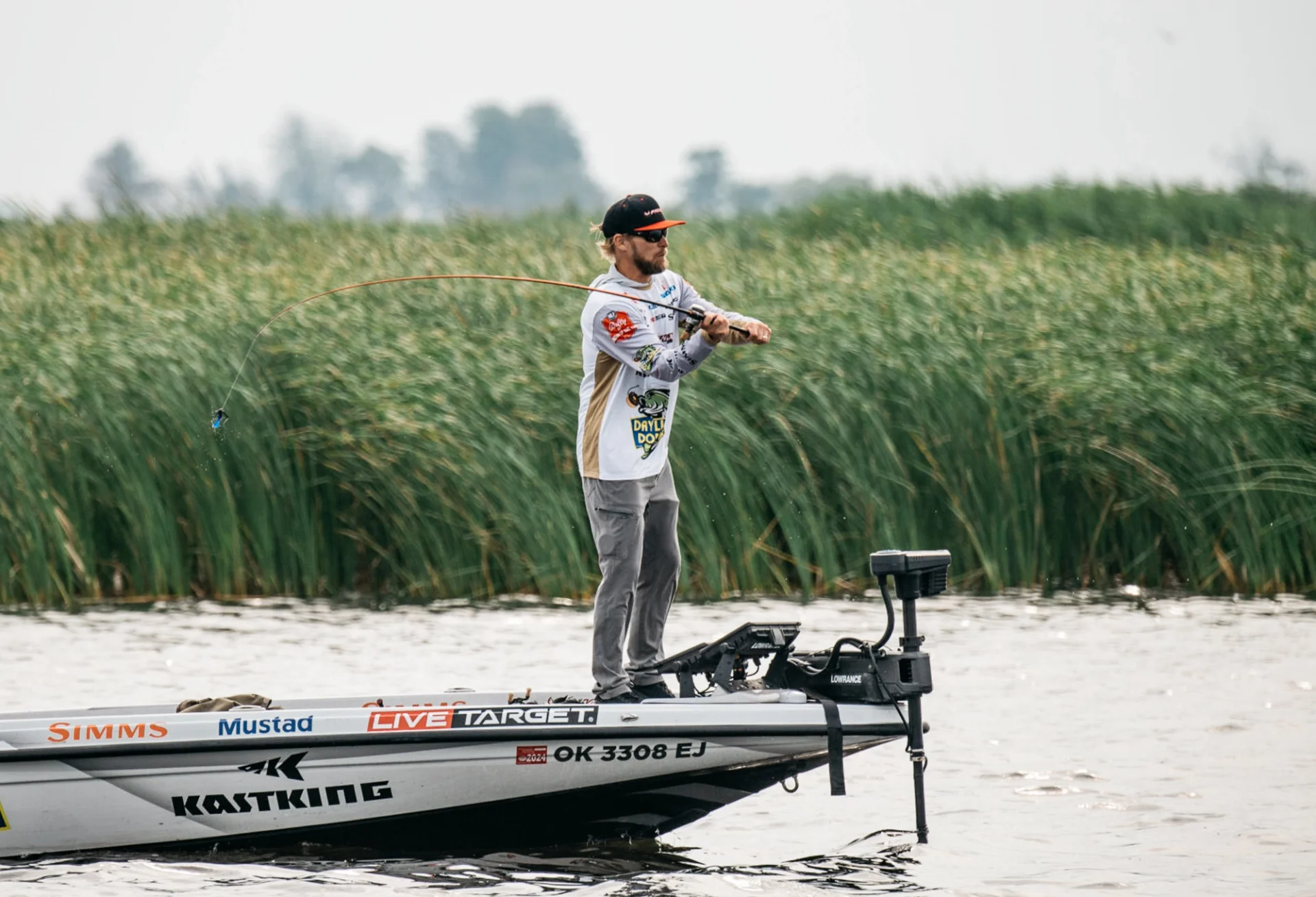Post-front Principles

Cold fronts are a fact of life for fall bass anglers, and whenever Oklahoma pro James Elam can fish the front side of these weather systems, that’s his strong preference. Realistically, anglers fish when they can fish, so whether that means tournament schedules or fun trips, Elam knows he has to shift gears for the days following a cold front.
The reason pre-front fishing stands as the general preference is that the falling barometric pressure, the cloudy skies, the wind, and the promise of cold weather stimulate the fish into active feeding. Such atmospheric volatility puts the fish in high gear, but once the front passes and the scene yields to bright skies and high pressure, Elam knows it’s time to adopt a more strategic approach.
What to Target
Depending on how quickly and cleanly a front passes, the second day following the weather transition usually brings the bright sunlight. Lacking the hats and sunglasses fishermen employ, bass utilize what nature provides.
“The fish are generally shallower this time of year so they sometimes need to shield their eyes,” Elam said. “I focus on bright-day cover like docks, brush piles or standing timber. They also may be buried in the grass; hunkered down until the cloud cover returns.”
Best Baits
While topwater baits often produce well on the front side of a weather system, Elam’s experience tells him he’ll struggle with frustrating short strikes during those post-frontal days. The fish may show some interest, but those glaring skies and a typically glassy surface find most fish simply swirling or nipping at topwaters.
One of Elam’s top producers is a 1/2-ounce Mustad Arm-Lock Spinnerbait in either white or ayu. The big profile and the flashing blades are bona fide attention-getters and any post-frontal fish looking to grab a quick bite will make an aggressive move on this bait.
“I want to cover a lot of water and and fish a lot of cover,” Elam said. “With that Arm Lock Spinnerbait, I can get really close to the cover and those fish will run out and chase it.”
Another post-front producer is the LIVETARGET Golden Shiner Rattlebait. Preferring the silver/black and silver/bronze colors, Elam mostly turns to this reaction bait for submersed vegetation.
“That bait can do a good job of pulling fish out of grass,” he said. “You can also throw that bait around shallow rocks and docks."
Another post-front bait Elam has on his deck is the LIVETARGET Sunfish Crankbait. An appealing alternative to shad-imitating baits, the sunfish crankbait is a good bet for bumping across shallow rocks warmed by the sun.
Line selection also bears a significant impact and Elam uses fluorocarbon for everything except grass presentations. In the vegetation, braid is essential for snapping the rattlebait from the salad. With fluorocarbon, he starts with 15-pound and adjusts up or down, based on what he feels is the right depth and speed.
Lighter line facilitates deeper and faster retrieves, while heavier line slows the bait and keeps it higher in the water column. Elam notes that going any larger than 17-pound fluoro deadens his bait motion and that nullifies the bottom-line objective of triggering reaction bites.
